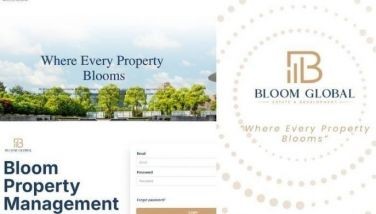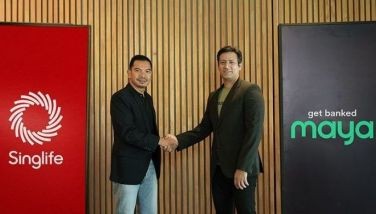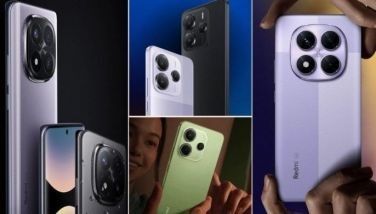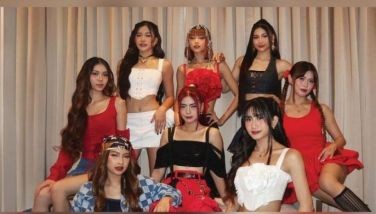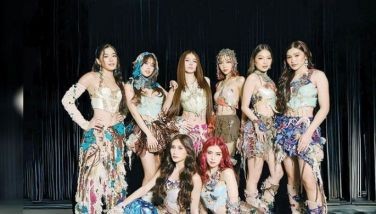The ‘localization’ of foreign TV shows
May 21, 2006 | 12:00am
 It started with Mexicans emoting in Filipino, albeit dubbed, in lachrymal novelas on Philippine TV. That was easy enough to do, since so many Filipino words are Spanish or Spanish derivatives and corruptions. This was followed by Chinese and Korean telenovelas, which were understandably harder to dub, but were dubbed just the same. (Some of the biggest hits on local TV today are Koreanovelas.) This was unthinkable some 10 years or so ago, when TV shows from other Asian countries never saw the light of local daytime, much less primetime. I remember speaking to Jonathan Hallett of Television Asia in one of his Manila visits and wistfully suggesting a program trade among Asian countries. Why not, I said, when we share so much culturally. It was 1996, I think, and it was a farfetched idea then. TV programmers couldn’t and wouldn’t imagine airing a Chinese or Korean soap.
It started with Mexicans emoting in Filipino, albeit dubbed, in lachrymal novelas on Philippine TV. That was easy enough to do, since so many Filipino words are Spanish or Spanish derivatives and corruptions. This was followed by Chinese and Korean telenovelas, which were understandably harder to dub, but were dubbed just the same. (Some of the biggest hits on local TV today are Koreanovelas.) This was unthinkable some 10 years or so ago, when TV shows from other Asian countries never saw the light of local daytime, much less primetime. I remember speaking to Jonathan Hallett of Television Asia in one of his Manila visits and wistfully suggesting a program trade among Asian countries. Why not, I said, when we share so much culturally. It was 1996, I think, and it was a farfetched idea then. TV programmers couldn’t and wouldn’t imagine airing a Chinese or Korean soap.
What were prevalent then were US foreign canned shows (airing mostly on two free TV channels. Cable penetration was still very low. The leading networks were into local content.) That was before the peso to the dollar exchange rate hit the roof, before the Asian crisis, when it was often more economical to acquire foreign programs than produce local shows. When the Asian crisis struck, TV networks which were importing foreign canned shows saw their dollar denominated debts ballooning before their eyes. Vic Vianzon, VP for Programs Acquisition of ABC 5 said, "I remember exchange rates kept going up. TV stations had to renegotiate or default, which was risky because then, you might cut your supply line."
Today "localization" has gone beyond the basic. Now, we’re doing official versions of international formats. Where some Asian countries enjoy lucrative exports of telenovelas, other Asian countries have been quick on the uptake of western formats, including the mega bucks mega hits. Fact is, for good or bad, branded entertainment has grown into one of the hottest "in" things in Asian TV, with broadcasters and producers doing licensed versions of hits and not quite hits: from the decades-old game show formats Price Is Right, Family Feud and Wheel of Fortune, to the latter-day hit Who Wants to be a Millionaire and The Weakest Link (Philippines); Fear Factor (Malaysia, Indonesia, India) to Big Brother (Thailand, Philippines), to Brand Idol which has cut a wide swath across the Asian region.
Among those actively marketing formats around the world is Endemol, a large Dutch independent format creator and a global media company which owns Big Brother, is now in 33 countries, with 100 series, and over two billion viewers. (Incidentally, word has it that Endemol was amazed at the creative and marketing savvy of ABS-CBN, its Philippine licensee for Big Brother, which proved that a licensee can enrich, enhance and effectively add local color to a branded format.) Then there’s FremantleMedia, owner of the Idol license, now with 81 series in 34 countries, with some 1.7 billion votes cast. Idol has current series in production in four Asian countries, Singapore, Malaysia, Indonesia and India. The Philippines will be the 35th country to do its own version, with ABC 5 having acquired the Idol license. Let’s take a look at a mega brand in Asia.
Sponsors for the first season were Nokia, P&G (Rejoice and Head & Shoulders), mobile service provider Airtel, Pepsi, Ambi Pur car perfumes and Silk & Shine conditioner, with all coming on board before the series started, paying sponsorships that cost three to four times the usual. Sony said advertisers took a risk with the show because "aside from the obvious overall value and association with a new show, Idol appealed to very basic human emotions such as appreciation of music and the spirit of competition."
Sponsors were given creative add-ons, like vignettes of contestants’ moments of rejoicing for Rejoice shampoo, for Head & Shoulders a confidence workshop, teaching proper usage of the brand and their own "results show" highlighting how contestants’ hair was transformed by the shampoo. Even if only half of Indian homes have TV sets, sponsors considered that about 60 percent of people in India are under 30 and attuned to their target of the newly-affluent, young urban audience. The finale of Indian Idol reportedly set a new audience record for the Sony Entertainment Channel when it aired in March 2005. A phenomenal 55 million votes were cast during the series.
As Sheldon Bailey, FremantleMedia’s "flying" producer, says, "Idol is not about finding another singer to put on air. It is about finding real talent from different genres of music the democratic way, as viewers will get to choose the winners. The success of Idol lies in the fact that it tells a universal story. It’s about ambition, the desire, the hunger to be a star." If Indian Idol is looking for one who makes the nation sing, Philippine Idol is set to find "The National Singer."
BrandSpace Articles
<
>
- Latest
- Trending
Trending
Latest
Trending
Latest
Recommended
February 15, 2025 - 12:00am






